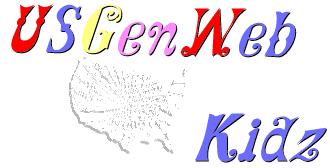Intermediate Genealogy

Welcome to the next step in Genealogy
If you have already worked the Basic Genealogy Page, or have experience in some genealogy work, then this is the page for you. If you just want to refresh your memory you are welcome as well.Here is a list of the subjects we will cover on this page.
- The Research Cycle
- Identify what you know.
- Decide what you want to learn (Pick a goal).
- Select the type of record(s)to look at.
- Find and search the record.
- Use what you have found.
- Organizing your Search.
The Research cycle:
The research cycle has five steps you can use to help you be successful.
Return to TopIdentify what you know.
Return to TopDecide what you want to learn (Pick a goal).
Pick one of your ancestors from the pedigree chart and identify which questions you want answers to about that person, such as, "when and where was she/he born?" Decide what you want to learn. Make sure your goals realistic and attainable. There are several questions that Pedigree charts ask that you can research.
Like:
- Born
- Place
- Married
- Place
- Died
- Place
So just pick one thing you want to search. Only one thing at a time. this will make the bigger job of the whole search, look like a lot less. This can also narrow down your location of where you are going to go to when you start the search.
Return to TopSelect the type of record(s)to look at
Return to TopFind and search the record. Return to Top
Use what you have found. Return to Top
Organizing your search
Keeping Records
One of the most important things you can learn is how to keep your records organized for your search. This will make the whole process easier and more productive. This is also the way you can do a lot of your work for school. Try to keep the records set up so you will not get them mixed up. Make a folder for each person on your pedigree. In this folder you will place:
- A family group sheet.
- A research log
- A correspondence log
- Later you will add:
- Any mail you receive
- Any notes you make during a research at the Library, or Court House
- Any copies of important documents
- Any photos that you may be lucky to find
- A Page with your Goals and when you have completed them
(this is not a must, but it helps)
It will also help if you number the folders like the numbers on your pedigree. #1 for you, #2 for your father, #3 for your mother, et. and keep them in this order for quick reference.
Return to TopWriting Letters
You will need to learn how to write a letter to do several things, like ask for a copy of a birth or death certificate. You will also need to write letters to request look up from a library or Genealogical Society, or other correspondence. There are just a few points to remember when you are writing.
- Try to make a short and to the point letter.
- Don't ask for whole families just ask for one or two names at a time.
- Offer to share any of your information you have gathered.
- Remember to send a self addressed stamped envelope.
- Keep a copy for your self so you can reference it if needed.
200 S. Main St.
Denver, CO.
2 Jan. 1999
Mary Smith
505 Peach Rd.
Aurora, CO
Dear, Ms. Jones.
I am researching my DOE, family line. I am the Daughter of John Quincy DOE. I need to find the birth date of
James Lynn DOE. my paternal gr grand father. He lived in the Denver area about 1903 and I need to know when his
birth, and marriage took place. I have an Obit form the Denver paper of the time. It states his death but not his birth.
It was abt. 1870.
If you have any information to help fill in the blanks it would be appreciated. I have enclosed a self addressed stamped envelope for your reply. I am willing to share any DOE family knowledge that I have already gathered.
Thanking you in advance.
Mary DOE Smith.
Maps How do they help?
Why do maps help with genealogy? Well, they can tell you a lot about the counties that surround the one you are researching in and also older maps can show you a glimpse of history. County boundaries changed frequently. While a person may be living in a county we know today, that location may have been in a different county when our ancestors lived there. They can also give you clues to migration route, and show you why your ancestors may have decided to leave one place and move to another.
OK, how do they tell you all this? Well, if you look at the new maps they will show you adjoining counties that you can look for more information in. But if you look at older maps then you will see when counties were formed and what counties they were created from. and if you can find a political map (that is one that shows population) you can see how populations have shifted over the years.
Return to TopNow if you feel ready you can go to the Next step Advanced Genealogy.
Stuff for Kids
Q: What is the earliest documented records in Colorado?
A: 1540. Costilla County was the first area of Colorado to be colonized
with a recorded history dating back to 1540, the year Coronado explored the
Southwest. It is home to the oldest non-indigenous town in Colorado, San Luis.
Today, Costilla County is mainly a farming and agricultural county but its
diverse wildlife and beautiful scenery make it a prime destination for tourists.
Read more…
For Teachers
Notice for Teachers and Librarians! Free Teleconference for K-12 Libraries was broadcast Friday, October 10, 2003 "Digital Treasures for Teaching and Learning" available now for your review on streaming video via the Web. Read more…
I would be glad to add any additional lesson plans that you would like to send to me.


